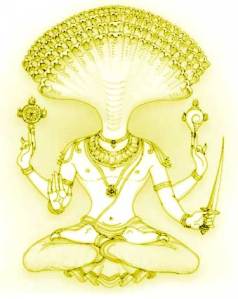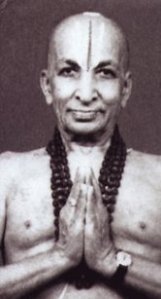 The first limb in the eight limbed path of yoga described by Patanjali in the Yoga Sutras is called Yama (or Yamas). The Yama are five characteristics or attitudes pertaining to how we interact with others. Not only in the ways that we physically effect the beings around us, but in the ways we interact with them in our energy and in our thoughts. Donna Farhi explains them as being “…concerned with the way we use our energy in relationship to others and , in a subtler sense, our relationship to ourselves.” In short, what is going on between you and the outside world? The words yama and niyama (teaser!) can be interpreted many ways. Some view them as restrictions or restraints, and I think if restricting and restraining turn you on then you should go ahead and pursue them in that fashion. Personally, I like to see them as behaviors and characteristics that show us what our true nature is when we reside in the center of ourselves. T.K.V. Desikachar says, “We can understand the whole practice of yoga as a process of examining our habitual attitudes and behaviors and their consequences.” We practice listening in to our own emotional states, our own motivations, and viewing our own thoughts with consideration as opposed to blind belief. We do this so that we can recognize when we have swayed outside of center and reroute ourselves. The yamas and niyamas show us that when all systems are go we get to be full of compassion, we have an attitude of consideration, we are peaceful, truthful, and gracious.
The first limb in the eight limbed path of yoga described by Patanjali in the Yoga Sutras is called Yama (or Yamas). The Yama are five characteristics or attitudes pertaining to how we interact with others. Not only in the ways that we physically effect the beings around us, but in the ways we interact with them in our energy and in our thoughts. Donna Farhi explains them as being “…concerned with the way we use our energy in relationship to others and , in a subtler sense, our relationship to ourselves.” In short, what is going on between you and the outside world? The words yama and niyama (teaser!) can be interpreted many ways. Some view them as restrictions or restraints, and I think if restricting and restraining turn you on then you should go ahead and pursue them in that fashion. Personally, I like to see them as behaviors and characteristics that show us what our true nature is when we reside in the center of ourselves. T.K.V. Desikachar says, “We can understand the whole practice of yoga as a process of examining our habitual attitudes and behaviors and their consequences.” We practice listening in to our own emotional states, our own motivations, and viewing our own thoughts with consideration as opposed to blind belief. We do this so that we can recognize when we have swayed outside of center and reroute ourselves. The yamas and niyamas show us that when all systems are go we get to be full of compassion, we have an attitude of consideration, we are peaceful, truthful, and gracious.
Oh my God, ahimsa is my favorite part of the eight limbs and it is right here at the very beginning! Ahimsa can be interpreted as non-harm, non-violence, non-aggression, compassion for all living things, and on and on. Okay, don’t kill anybody.. don’t even punch them…fine. That much is pretty obvious. An action or thought that prohibits any being from living freely is considered harmful, but ahimsa asks much more of us than that. Ahimsa asks us not to do harm even with our thoughts, what’s more: not even to harm ourselves with our thoughts. If we can cultivate an attitude of inward compassion we can then begin to gift that compassion outward. Self acceptance is a bitch. I struggle with ahimsa every time I look into a mirror, or try to determine the worth of my life based on my achievements and job titles. We violate ahimsa when we condemn our own efforts instead of congratulating ourselves for them; when we dwell on mistakes and embarrassments; when we stifle our creative ideas at conception; and when we endlessly worry. If you are curious about the quality of your inwardly directed thoughts, try keeping a running tally of the negative thoughts you have about yourself, include the times you scold yourself, remind yourself of past mistakes, or stop yourself from trying something that you’d like to. Even one day of this practice is illuminating. Now imagine what treating another person in that way would feel like, and what it would do to them to receive such abuse. We are not required to be neutral. We can protect ourselves when we need to, we can take direct action, and build firm boundaries. Honoring ahimsa means that we track our intentions and that we act with clarity.
Ahimsa requires vigilance and the ability to self observe. Vigilance and the ability to self observe require bravery. Who am I really? How do I choose to be in the world? What is my impact and what do I want my impact to be? Endeavoring to live in the attitude of compassion doesn’t mean that we won’t have big, strong emotional states. When we get royally pissed, full of fear, and destructively jealous (and we will), we apply ahimsa even there, especially there. We self-observe in compassion, seeing ourselves as whole human beings taking our best shot at life, we congratulate our efforts and move on.



